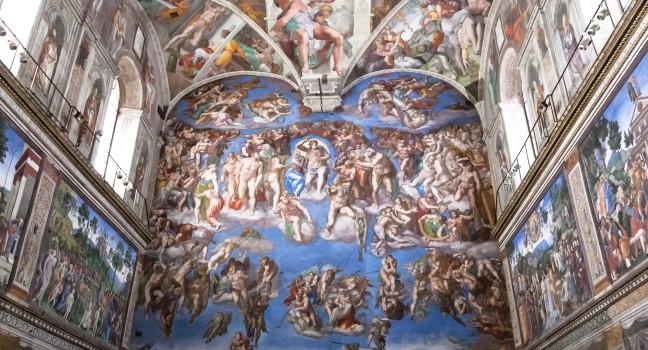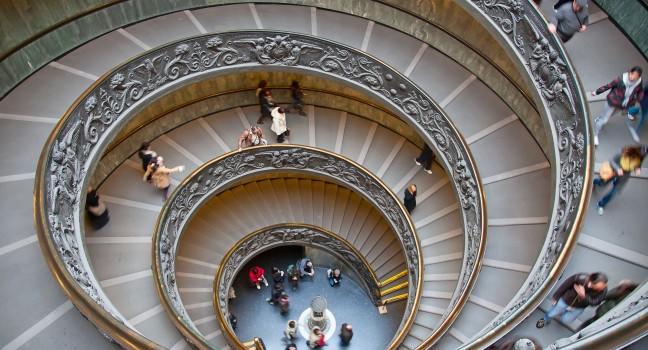The collection of Florentine paintings, dating from the 13th to 18th century, is largely unremarkable, but the sculptures by Michelangelo are worth the price of admission. The unfinished Slaves, fighting their way out of their marble prisons, were meant for the tomb of Michelangelo's overly demanding patron, Pope Julius II (1443–1513). But the focal point is the original David, moved here from Piazza della Signoria in 1873. It was commissioned in 1501 by the Opera del Duomo (Cathedral Works Committee), which gave the 26-year-old sculptor a leftover block of marble that had been ruined 40 years earlier by two other sculptors. Michelangelo's success with the block was so dramatic that the city showered him with honors, and the Opera del Duomo voted to build him a house and a studio in which to live and work.
Today, David is beset not by Goliath but by tourists, and seeing the statue at all—much less really studying it—can be a trial. Save yourself a long wait in line by reserving tickets in advance. A plexiglass barrier surrounds the sculpture, following a 1991 attack on it by a self-proclaimed hammer-wielding art anarchist who, luckily, inflicted only a few minor nicks on the toes. The statue is not quite what it seems. It is so poised and graceful and alert—so miraculously alive—that it is often considered the definitive sculptural embodiment of High Renaissance perfection. But its true place in the history of art is a bit more complicated.
As Michelangelo well knew, the Renaissance painting and sculpture that preceded his work were deeply concerned with ideal form. Perfection of proportion was the ever-sought Holy Grail; during the Renaissance, ideal proportion was equated with ideal beauty, and ideal beauty was equated with spiritual perfection. But David, despite its supremely calm and dignified pose, departs from these ideals. Michelangelo didn't give the statue perfect proportions. The head is slightly too large for the body, the arms are too large for the torso, and the hands are dramatically large for the arms.
The work was originally commissioned to adorn the exterior of the Duomo and was intended to be seen from below and at a distance. Michelangelo knew exactly what he was doing, calculating that the perspective of the viewer would be such that, in order for the statue to appear proportioned, the upper body, head, and arms would have to be bigger, as they would be farther away. But he also sculpted it to express and embody, as powerfully as possible in a single figure, an entire biblical story. David's hands are big, but so was Goliath, and these are the hands that slew him. Music lovers might want to check out the Museo delgli Instrumenti Musicali, also within the Accademia; its Stradivarius is the main attraction.





